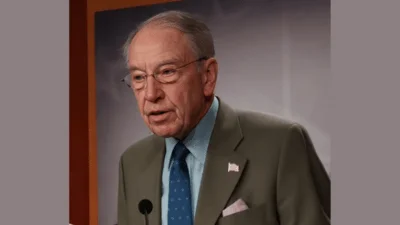John Furner President and CEO | Official website
Shoppers continue to demonstrate a willingness to spend despite slower growth in consumer spending due to smaller job and wage gains and high interest rates, according to National Retail Federation (NRF) Chief Economist Jack Kleinhenz.
“U.S. economic growth for the remainder of this year will depend on several factors but particularly the pace of job growth, inflation, and what actions will be taken by the Federal Reserve,” Kleinhenz stated. “The good news is that the economy is growing, inflation is moderating, and overall fundamentals look fine as increased consumer spending supports underlying momentum.”
Kleinhenz’s comments were made in the June issue of NRF’s Monthly Economic Review. The report indicated that gross domestic product (GDP) is still expected to grow about 2.3% over 2023. Employment is now projected to grow by an average of 180,000 jobs per month, which is approximately 50,000 higher than earlier expectations this spring. Inflation measured by the Personal Consumption Expenditures Price Index should drop to about 2.2% by year-end, nearing the Federal Reserve’s target of 2%.
“The biggest change in the economic outlook since our initial projections is that immigration has been much stronger,” Kleinhenz noted. He pointed out that the Congressional Budget Office now estimates net immigration last year was 3.3 million—more than triple its previous estimate of 1 million. “New immigrants have increased the supply of workers, raising production capacity, closing some shortages in the labor market and allowing the economy to generate jobs without overheating and accelerating inflation.”
The availability of more workers, especially in low-wage jobs, can help limit wage-driven inflation and increased immigration “explains some of the surprising strength in consumer spending since 2022,” Kleinhenz added.
Inflation was higher than anticipated during early months this year but was primarily driven by service prices—a trend expected to be short-lived according to Kleinhenz. Overall year-over-year inflation stood at 2.7% in March based on PCE index data; however, this figure was largely influenced by a 4% rise in service-sector prices while goods prices remained unchanged from a year earlier and have been gradually declining.
Kleinhenz had initially expected the Federal Reserve would begin lowering interest rates in July but with inflation not yet reduced sufficiently for Fed targets—a rate cut isn’t likely until later this year.
“The Fed has reinforced its belief in being data-dependent which means inflation needs consistent reduction before central bank rate cuts occur,” said Kleinhenz. “The Fed has managed to restrain economic activity bringing down inflation; delaying easing should further cool off economic conditions maintaining our GDP growth projections intact.”
While consumer spending growth rate has begun easing due slower job/wage gains alongside higher interest/tighter credit—"consumers clearly remain willing spend," emphasized Kleinhenz noting core retail sales defined NRF rose unadjusted yearly first four months aligning forecasted retail sales increase between 2-3 percent over last year's figures.
As an authoritative voice within retail industry analysis regarding affecting economic conditions occurs through reports like Monthly Economic Review conducted by NRF advocating people/brands/policies aiding sector success contributing significantly towards national GDP employment statistics across America spanning century-long advocacy roles globally/local community impacts detailed via nrf.com website resources available public domain usage purposes alike stakeholders interested therein understanding better evolving trends shaping future outlooks respectively seen contextually relevant given current prevailing scenarios observed herein mentioned thus far discussed comprehensively overall summary provided above accordingly summarised briefly hereunder stated concisely:
###





